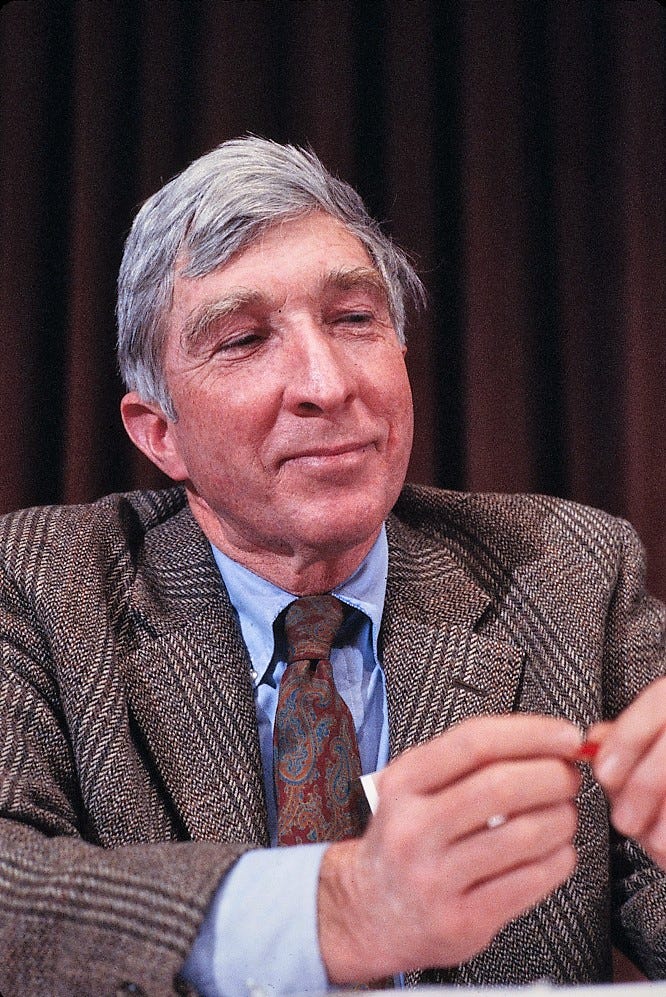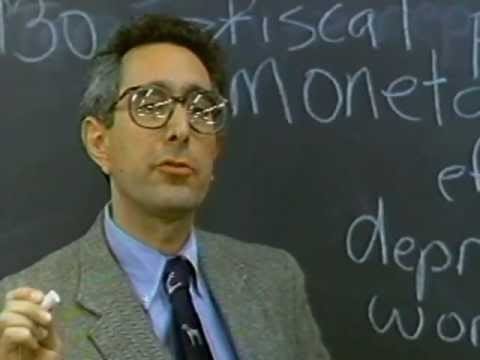JAQR - August 4, 2024
Fictional Places, Symphony No. 94, Painters, World Heritage Sites, 1919 Paris Peace Conference, The Munsters, The Night of the Hunter, Nuevo León, and more...
Thank you for reading another issue of the Jeopardy Answer & Question Recap, or JAQR [“jacker”] for short. This recap includes two clues from each of the first five games of the 2024 Jeopardy! Masters tournament, whose contestants were Amodio, Groce, Holzhauer, Raut, Roach, and Schneider. The recap includes Daily Doubles, Final Jeopardy clues, and Triple Stumpers. The first half of the recap includes just the clues so you can quiz yourself if you want. The second half gives you some (hopefully) interesting information about the clues and/or some related info.
DAILY DOUBLE #1
AUTHORS' FICTIONAL PLACES
The town of Eastwick, Rhode Island
DAILY DOUBLE #2
18th CENTURY NAMES
In 1792 he surprised London concertgoers with his Symphony No. 94
DAILY DOUBLE #3
RENAISSANCE MASTERS
Many artists have depicted Christ crucified; his version, in a Madrid collection, has Toledo in the background
DAILY DOUBLE #4
WE OUT HERE TRYNA MINE
In a 1909 book on mining, this man who got more famous 20 years later noted that overproduction of mined metal can "depress prices"
FINAL JEOPARDY #1
WORLD HERITAGE SITES
This entire capital is a World Heritage Site "linked to the history of the Military & Charitable Order of St. John of Jerusalem"
FINAL JEOPARDY #2
20th CENTURY LEADERS
1 of the "Big Four" at the 1919 Paris Peace Conference & a former journalist, he'd supported the Impressionists & Alfred Dreyfus
FINAL JEOPARDY #3
THE THEATRE
This show debuted December 30, 1879 in a theater on the Devon coast, with the cast in costumes from a related show
TRIPLE STUMPER #1
4-LETTER TV
"The Munsters" had a pet dragon named this who was known to scare off ne'er-do-wells
TRIPLE STUMPER #2
CLASSIC MOVIES
He played a sinister preacher in "The Night of the Hunter" & a revenge-seeking ex-con in "Cape Fear"
TRIPLE STUMPER #3
NORTH AMERICAN COLLEGES & UNIVERSITIES
Mexico's M.I.T., actually with initials T.d.M., is this Nuevo Leon state capital's institute of technology
BONUS CLUE #1
AARON BURR & FRIENDS (correct responses have initials that consist of two consecutive letters of the alphabet)
Adeline Stephen published novels under this name
BONUS CLUE #2
AARON BURR & FRIENDS
In 1877 Congress commissioned the Electoral Commission after he got 184 electoral votes but needed 185; it did not end well for him
BONUS CLUE #3
THE ELITE
On D-Day the U.S. Army Rangers led the way in scaling the cliffs of this pointe overlooking Omaha Beach
DAILY DOUBLE #1
AUTHORS' FICTIONAL PLACES
The town of Eastwick, Rhode Island
***JOHN UPDIKE***
American author John Updike (1932-2009) used the town of Eastwick, Rhode Island as the setting of his 1984 novel The Witches of Eastwick. It centers on three witches who are seduced by a man named Daryl (who just might be The Devil). In a 1987 movie adaptation, the witches were played by Cher, Michelle Pfeiffer, and Susan Sarandon, while Daryl was played by Jack Nicholson. A 2008 sequel to the novel titled The Widows of Eastwick was set 30 years later and was Updike’s last novel.
Updike is probably best known for his 1960 novel Rabbit, Run and its three-ish sequels. The novel is set in Pennsylvania and centers on the former star high school basketball player Harry "Rabbit" Angstrom. He feels bound by marriage, small-town life, and his job selling a kitchen gadget called the MagiPeeler. The novel’s three sequels include Rabbit Redux (1971), Rabbit Is Rich (1981), and Rabbit at Rest (1990), the last two of which won the Pulitzer. A novella titled Rabbit Remembered (2001) is set after Harry Angstrom’s death and centers on other characters from the novels.
Updike was inspired by Nathaniel Hawthorne to write The Scarlet Letter trilogy. The first novel, A Month of Sundays, centers on an adulterous minister. The second novel, Roger's Version, includes an old Harvard professor and a young CS grad student, the latter of whom believes he can prove that God exists with computer science. The third novel, S., centers on a housewife who rebels against her Puritan heritage.
Other works by Updike include Gertrude and Claudius, which serves as a sorta prequel to Shakespeare's Hamlet. A line from "The Battle Hymn of the Republic" inspired the title of his 1996 novel In the Beauty of the Lilies. The final MLB game of Ted Williams inspired his essay "Hub Fans Bid Kid Adieu." Not everyone was a fan of Updike though. Many critics labelled him misogynistic, and David Foster Wallace called him a "penis with a thesaurus." Perhaps the best takedown goes to Patricia Lockwood, who compared his writing to "a malfunctioning sex robot attempting to administer cunnilingus to his typewriter."
Updike is one of four authors to have won the Pulitzer Prize for Fiction twice. The other three authors are:
William Faulkner - A Fable and The Reivers
Booth Tarkington - The Magnificent Ambersons and Alice Adams
Colson Whitehead - The Underground Railroad and The Nickel Boys

DAILY DOUBLE #2
18th CENTURY NAMES
In 1792 he surprised London concertgoers with his Symphony No. 94
***JOSEPH HAYDN***
Austrian composer Joseph Haydn (1732-1809) is best known for his string quartets and symphonies, and is often called the “father” of both of those genres. Haydn spent most of his adult life working for the wealthy Esterházy family. He wrote many compositions for a string instrument called the baryton, which was played by Nikolaus I, Prince Esterházy. He composed an oratorio called The Creation (or Die Schöpfung), whose libretto was based on Milton’s Paradise Lost and the Biblical books of Genesis and Psalms. It is believed to be the first musical work published with a bilingual text (could be performed in either English or German). Haydn was nicknamed “Papa” and his students included Ludwig van Beethoven. Four days after dying, Haydn’s head was severed and stolen by two men who were interested in the skull shape “science” of phrenology. A catalogue of the musical compositions by Haydn was compiled by the Dutch musicologist Anthony van Hoboken.
Haydn composed 68 string quartets and ~104 symphonies). Some of the best-known ones include:
String Quartet No. 62 - aka the “Emperor,” it is part of his "Erdödy" quartets (#60-65 and named for a Hungarian count); it includes a set of variations on the song “Gott erhalte Franz den Kaiser” (meaning “God save Emperor Francis”), whose music was later used in Germany’s national anthem (“Deutschlandlied”)
Symphony No. 45 - aka the “Farewell,” it is in F-sharp minor and features an ending in which musicians gradually stop playing and leave the stage; Haydn wrote it to convince Prince Esterházy to let the musicians return home from an extended stay at a summer palace
Symphony No. 94 - aka the “Surprise,” it is part of his “London” symphonies (#93-104) and was commissioned by Johann Peter Salomon; the symphony is named for the sudden fortissimo (very loud) chord in the otherwise pianissimo (very soft) second movement


